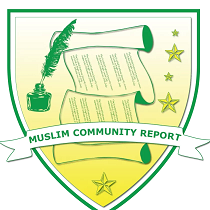10 Months since Iran’s protests, Kurdish exiles remain in Limbo
Northern Iraq has become a refuge for many Iranian Kurds who fled their homeland during last year’s women-led mass protests. Among them is 17-year-old Sarina, who now resides in Arbil, the capital of Iraqi Kurdistan. Like others in her situation, Sarina keeps a low profile, wary of drawing attention to herself due to security fears. She works as a waitress, concealing her identity behind a Covid mask while navigating the streets of her new home.
The protests were sparked in September by the tragic death of 22-year-old Kurdish-Iranian, Mahsa Amini, who died in morality police custody after being arrested for allegedly violating the strict Islamic dress code for women. Sarina, who was visiting her mother in Mahabad at the time, actively participated in the demonstrations. When the situation escalated and her friend was arrested, Sarina went into hiding. Later, she crossed the porous mountain border into Iraq’s autonomous Kurdistan region.
Life in exile has not been easy for Sarina, who now juggles two jobs to make ends meet, earning $800 a month. Despite the challenges, she remains committed to staying close to her homeland, expressing her desire to return to her family swiftly if needed.
The protests in Iran, carried under the motto “woman, life, freedom,” were met with a severe state crackdown, resulting in the deaths of hundreds of protesters and security personnel. Thousands were arrested, with the Iranian government labeling the events as “riots” orchestrated by foreign enemies. The harsh economic conditions in Iran, exacerbated by sanctions, have driven many Iranian Kurds to seek work in Iraq.
Estimating the number of Iranian Kurds who fled to Iraq is difficult due to the lack of official statistics. Both sides of the border share linguistic and cultural ties, and many have relatives living across the Iraq-Iran divide. Moreover, Iranian Kurdish opposition groups have long maintained bases in Iraqi Kurdistan, which led to deadly military strikes by Iran during the protests.
In a bid to strengthen border security, Iraq and Iran signed an agreement earlier this year. However, tensions persist as Iran threatens further military action if Kurdish opposition groups are not disarmed by September.
Fuad, a 27-year-old architect who also escaped to Iraq, shares a similar story of leaving everything behind in Iran. He, too, took part in the protests until circumstances forced him into hiding. The pain of being away from family weighs heavily on him, but the fear of arrest prevents him from returning.
Data released by the Kurdistan regional government in May indicates that more than 10,000 Iranians currently reside in Iraqi Kurdistan, with many having lived there for years. One such individual is Rizgar Khasraw, who runs a sweets business in Arbil. He commemorates Mahsa Amini by naming his second branch after her and displaying a signboard featuring her image, considering her a symbol of freedom for Iran.
Despite the passage of ten months since the protests, tensions remain high in Iran as authorities announce a resumption of morality police patrols to enforce the dress code for women, indicating that the impact of the protests is still felt. The plight of Kurdish exiles continues, and many remain in limbo, uncertain about their future in their homeland.

